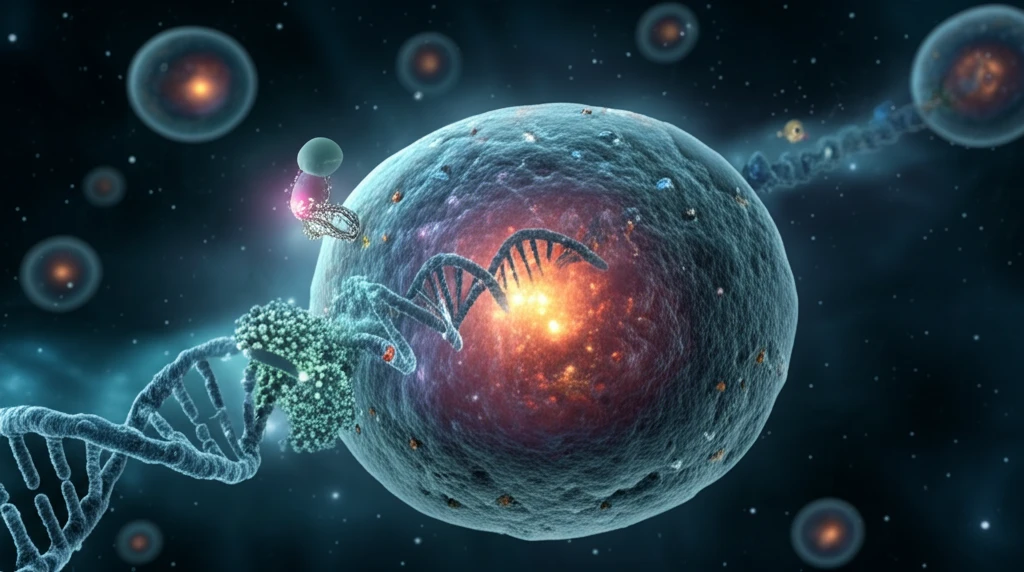
Unlocking the Secrets of Gene Activation: How Our Cells Switch On
"Groundbreaking research reveals the complex process of transcription, offering new insights into gene regulation and cellular function"
Our genes, the blueprints of life, aren't always switched on. In fact, the regulation of gene expression is a highly controlled process, especially when it comes to transcribing our DNA. Think of it like a car idling at a stoplight – ready to go, but not quite in motion. This 'pause' in gene activity is a widespread phenomenon, particularly in metazoan protein-coding genes, and it's critical for proper cellular function.
For years, scientists have been working to understand the precise molecular mechanisms that govern this 'pause' and the subsequent 'release' into active transcription. The process involves a complex interplay of proteins, including key players like DRB sensitivity-inducing factor (DSIF) and negative elongation factor (NELF), which essentially put the brakes on RNA polymerase II (Pol II), the enzyme responsible for transcribing DNA.
But what triggers the release of this pause, and how does Pol II transition into an active, elongating state? New research is providing unprecedented insights into these fundamental questions, revealing the critical roles of additional factors like P-TEFb, PAF, and SPT6 in the activation process.
The Activation Puzzle: A Step-by-Step Unveiling

The new study, published in Nature, details the formation of an activated Pol II elongation complex in vitro, meticulously piecing together the steps required for this transition. Researchers discovered that the kinase function of positive transcription elongation factor b (P-TEFb) is absolutely essential. P-TEFb, comprising the kinase CDK9 and cyclin T1, is known to phosphorylate DSIF, NELF, and the C-terminal domain (CTD) of Pol II itself. However, the activation story doesn't end there.
- PAF Displaces NELF: PAF physically knocks NELF off the Pol II funnel, the entry point for nucleotides, effectively removing the 'pause' signal.
- P-TEFb Phosphorylates the CTD Linker: P-TEFb targets the linker region connecting the CTD to the Pol II body, modifying its structure.
- SPT6 Binds and Opens the RNA Clamp: SPT6 latches onto the phosphorylated CTD linker and forces open the RNA clamp formed by DSIF, facilitating RNA exit.
Implications and Future Directions
This research not only clarifies a fundamental process in molecular biology but also opens new avenues for therapeutic interventions. Understanding the precise mechanisms that govern gene activation could be crucial in developing targeted therapies for diseases linked to transcriptional dysregulation, such as cancer, autoimmune disorders, and viral infections. By manipulating the activity of P-TEFb, PAF, or SPT6, it may be possible to selectively switch on or off specific genes, offering new strategies for disease treatment.
